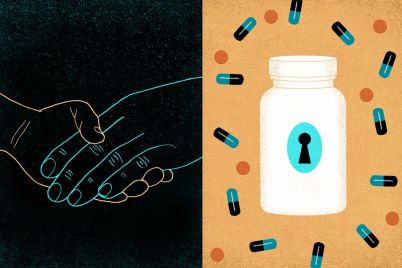Daylight saving time has ended, and most Americans have turned their clocks back an hour. My sixth-grader is in heaven.
At 6:50 a.m. these days, our once testy tween zombie is now … moderately awake and relatively lucid.
Instead of rising to gauzy predawn light, she’s got glowy morning sunshine beaming around her curtains. When she sets off for school, the sun has been up nearly a full hour. Just a 60-minute change has lightened both the morning and her mood. At breakfast today, I think I even spied a smile.
On November 6, every state in the United States except Hawaii and most of Arizona switched from daylight saving time, or DST, to standard time (those two states don’t observe DST). That switch shifted an hour of light from the evening to the morning. In March, we’ll move in the other direction when we “spring forward,” trading morning light for brighter evenings.
The United States’ biannual time change has been lighting up headlines since the U.S. Senate’s unanimous vote in March to make daylight saving time permanent. The Sunshine Protection Act would forgo turning clocks to and fro, repeating an unpopular experiment Congress tried in the 1970s and prioritizing evening light throughout the year. But the health case for staying on daylight saving time is pretty dim. And what such a shift could mean for adolescents is especially gloomy.
Even the name “daylight saving time” isn’t quite right, says Kenneth Wright, a sleep and circadian expert at the University of Colorado Boulder. There’s no change in the amount of daylight, he says. “What we’re doing is changing how we live relative to the sun.” When we move our clocks forward an hour, noon no longer represents when the sun is near its highest point in the sky. Suddenly, people’s schedules are solarly out of sync (SN: 10/17/16).
That’s a big deal biologically, Wright says. Humans evolved with a daily cycle of light and dark. That sets the rhythms of our bodies, from when we sleep and wake to when hormones are released. Morning light, in particular, is a key wake-up signal. When we tinker with time, he says, “we’re essentially making the choice: Do we want to go with what we’ve evolved with, or do we want to alter that?”
From a health perspective, if he had to rank permanent daylight saving time, permanent standard time or our current practice of biannual clock changing, Wright says, “I think the answer is incredibly clear.” Permanent standard time is healthiest for humans, he says. In his view, permanent daylight saving time ranks last.
Wright is not alone. As daylight saving time ticked toward its yearly end, sleep experts across the country stepped out in favor of standard time.
Scientists have linked sleep loss, heart attacks and an increased risk of dying in the hospital after a stroke to the transition to daylight saving time, neurologist Beth Malow wrote in Sleep in September. She testified to that this year before a U.S. House of Representatives subcommittee.
“My overall message was that permanent standard time was a healthier choice,” says Malow, of Vanderbilt University Medical Center in Nashville.
For both Malow and Wright, some of the most compelling studies examine U.S. time zone borders. Living on the late sunset side of a border takes a toll on people’s health and sleep compared with those living on the early sunset side, scientists suggested in 2019. A similar study in 2018 also found an increased risk of liver cancer the farther west people lived within a time zone, where the sun rises and sets later in the day.
But the downsides of nighttime light are not always crystal clear. A November study, for example, suggested that year-round daylight saving time would reduce deer-vehicle collisions (SN: 11/2/22). But studies like these can be hard to interpret, Malow says. Other factors may come into play, like deer’s seasonal activity and changing roadway conditions. “The car-crash literature has been so mixed,” she says. “I’ve seen stuff come out on both sides.”
She points to a study in Time & Society in June which found that people on the western edge of a time zone had more automobile fatalities than their easterly neighbors.
Dark mornings and light evenings mean people’s body clocks don’t line up with the sun. That mismatch can hamper sleep, making for drowsy drivers, which may factor into collisions, Malow says. In the evenings, if “there’s still light in the sky, it messes with our brains.”
Morning light wakes up the brain
The brains of teens and tweens are even more vulnerable, Malow says. When kids go through puberty, the brain waits an hour or two longer to release melatonin, the “hormone of darkness,” which tells the bodies of kids and adults alike that it’s time to go to sleep.
Bedtime can be tough for older kids because, physiologically, they’re just not as sleepy as they used to be. And as I’ve learned with my daughter, if you throw early school start times in the mix, rising and shining can be even harder.
“I have a middle schooler, too. It’s brutal,” says Lisa Meltzer, a pediatric sleep psychologist at National Jewish Health in Denver. Some U.S. school districts are making changes that might make mornings easier. This year, most high schools and middle schools in California debuted later start times. Five years ago, Meltzer’s school district embarked on a similar experiment. What they learned can teach us how older kids might fare if daylight saving time were to stay put year-round, Meltzer says.
In 2017, the Cherry Creek School District in suburban Denver flipped middle and high schools’ early start times with elementary schools’ later ones. The change didn’t much affect younger kids, who still started class well after sunrise, at 8 a.m., says Meltzer, who presented the science behind changing school start times to her school board. But older kids, who started school at 8:20 a.m. or 8:50 a.m., noticed a big difference. They slept more at night and tended to function better during the day, Meltzer’s team reported most recently in the February Sleep Medicine.
“The number one thing [high-schoolers] said was how much they liked going to school when it was light out,” she says.
And it wasn’t just the students. Their teachers, too, felt the benefits of later start times, Meltzer and colleagues report November 6 in the Journal of School Health.
Morning light is crucial for keeping people’s bodies on schedule, Meltzer says. With permanent daylight saving time, kids will not have the same eye-opening, brain-wakening, a.m. sunshine. “We need morning sunlight to keep our internal clocks on track,” she says. “I cannot emphasize this enough.”
So far, the Senate’s plan for year-round daylight saving time has seemed to stall, so the prospect of an everlasting shift toward evening light doesn’t look bright. But come March, when daylight saving time begins anew, we’ll have to adjust again.
For kids struggling with sleep, Sonal Malhotra, a pediatric pulmonologist and sleep doctor at Baylor College of Medicine in Houston, has some tips. Consistency is key, she says: regular sleep, meal and exercise schedules. And when waking up, she adds, “make sure you have bright light.” Malhotra also recommends avoiding afternoon naps and caffeine.
I don’t know if my daughter will ever be bright-eyed and bushy-tailed in the mornings (I’m not), but when mornings eventually get darker, Malhotra’s advice may give us something to fall back on.
Source by : https://www.sciencenews.org/article/daylight-saving-time-sleep-health-science




